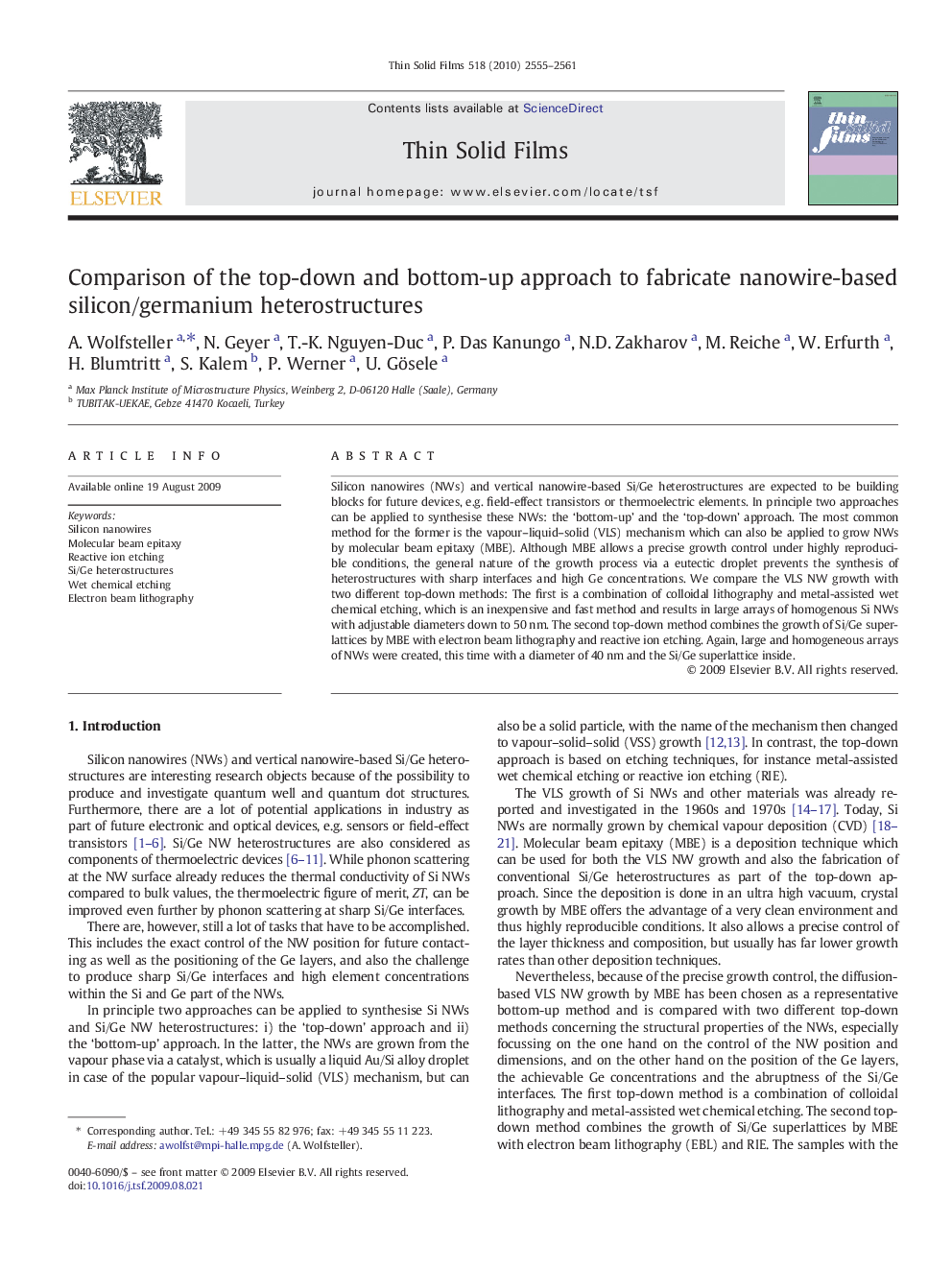| Article ID | Journal | Published Year | Pages | File Type |
|---|---|---|---|---|
| 1671398 | Thin Solid Films | 2010 | 7 Pages |
Abstract
Silicon nanowires (NWs) and vertical nanowire-based Si/Ge heterostructures are expected to be building blocks for future devices, e.g. field-effect transistors or thermoelectric elements. In principle two approaches can be applied to synthesise these NWs: the 'bottom-up' and the 'top-down' approach. The most common method for the former is the vapour-liquid-solid (VLS) mechanism which can also be applied to grow NWs by molecular beam epitaxy (MBE). Although MBE allows a precise growth control under highly reproducible conditions, the general nature of the growth process via a eutectic droplet prevents the synthesis of heterostructures with sharp interfaces and high Ge concentrations. We compare the VLS NW growth with two different top-down methods: The first is a combination of colloidal lithography and metal-assisted wet chemical etching, which is an inexpensive and fast method and results in large arrays of homogenous Si NWs with adjustable diameters down to 50Â nm. The second top-down method combines the growth of Si/Ge superlattices by MBE with electron beam lithography and reactive ion etching. Again, large and homogeneous arrays of NWs were created, this time with a diameter of 40Â nm and the Si/Ge superlattice inside.
Keywords
Related Topics
Physical Sciences and Engineering
Materials Science
Nanotechnology
Authors
A. Wolfsteller, N. Geyer, T.-K. Nguyen-Duc, P. Das Kanungo, N.D. Zakharov, M. Reiche, W. Erfurth, H. Blumtritt, S. Kalem, P. Werner, U. Gösele,
